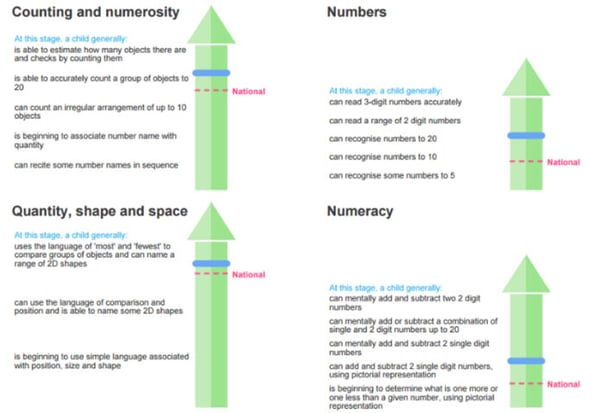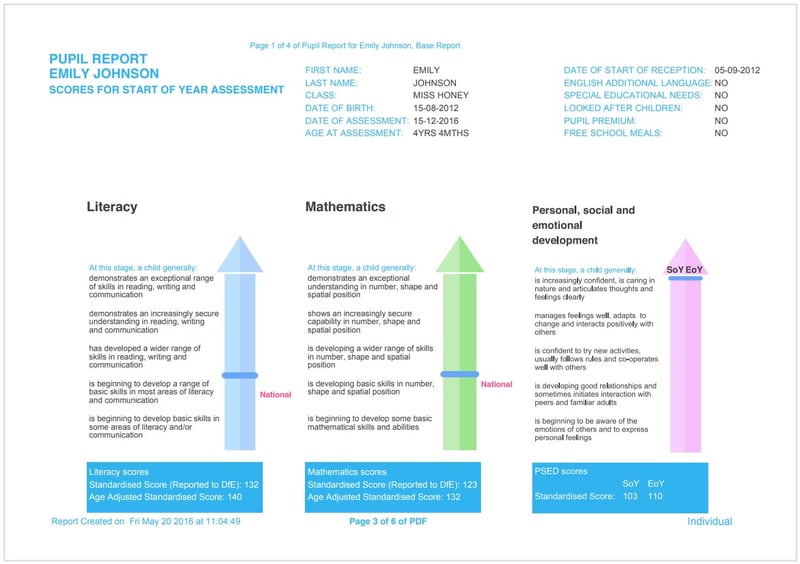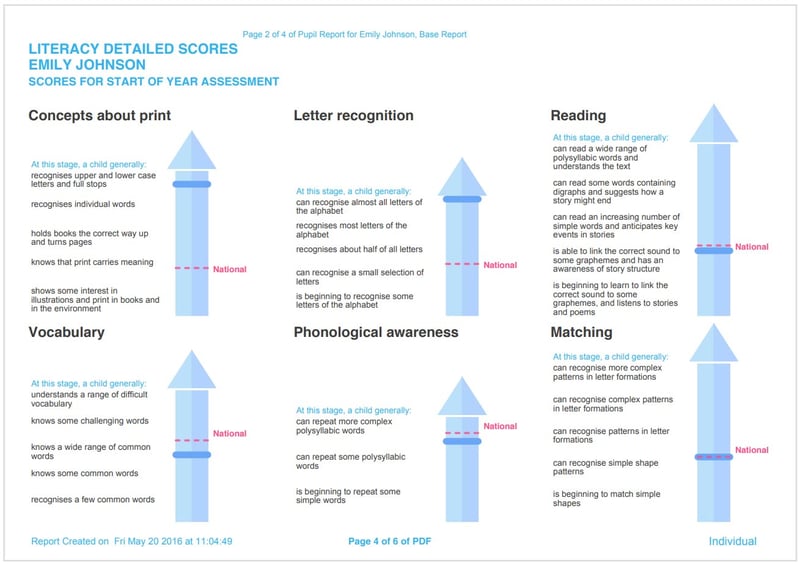Find out more.
Reception is the crucial year in which pupils make their most rapid progress.
Emily is an energetic and motivated pupil. Her teacher reports that she is ‘very curious’ and ‘asks a lot of questions’, she has a ‘good memory for details’ but, at times, has somewhat ‘fleeting’ attention.
Emily started reception in September and in addition to her teachers carrying out observation-based assessment she was assessed using BASE to get an objective view of her developing ability in literacy and mathematics. She will be assessed again at the end of the reception year to measure how much progress she has made.
Literacy and mathematics scores
Emily’s scores in the BASE assessment were 113 in literacy and 114 in mathematics. This means Emily’s scores fall in the uppermost region of the range (between 85 and 115) in which most children’s scores fall.
Emily’s scores show that she has an understanding of the basic skills in most areas of literacy and mathematics and is developing a wider range of skills in both of these areas. The reports show that her performance at this point is above the national average compared to children of the same age.
Given Emily’s above-average overall literacy and mathematics scores, it might be assumed that there should be no major concerns associated with her learning. However, a more detailed analysis of her scores in the individual areas of learning offers an additional and incisive layer of information which can help teachers develop a thorough and comprehensive picture of some of Emily’s strengths and learning needs.
Literacy: a detailed analysis
Longitudinal studies have monitored children from an early age to investigate the importance and impact of the knowledge and skills acquired during the reception year on later attainment.
Consequently, the BASE literacy assessment has been developed to include six key areas of cognitive development.
To ensure Emily’s teachers can plan for her individual needs, it is important to look beyond her overall literacy scores.
They should investigate what Emily knows and can do in each strand of literacy development.
In fact, the BASE assessment reveals that, at this stage, Emily can generally recognise simple patterns as well as recognising upper and lower case letters and full stops. She can generally repeat more complex polysyllabic words and she knows a wide range of common words. Emily is able to recognise almost all letters of the alphabet and she can read an increasing number of simple words.
Mathematics: a detailed analysis
Research evidence reveals that the process of children learning the language of mathematics, the representation and manipulation of quantities, and the development of spatial awareness does not happen in isolation to other aspects of children’s development. It uses processes that play a major role in other aspects of cognitive development.
At this stage:
- Emily is generally able to estimate how many objects there are and check by counting them.
- She can generally recognise numbers up to 20 and is able to use the language of ‘most’ and ‘fewest’ to compare groups of objects.
- Emily can also mentally add and subtract 2 single-digit numbers. In contrast to her literacy scores, Emily’s mathematics scores are far more consistent across the range. In each area she is generally performing above the national average and shows no obvious signs of requiring support.

Creating a powerful profile
BASE has been developed from over 40 years’ experience of baseline assessments. It is based on the most robust evidence-based research and uses a variety of approaches to provide reliable and valid information about each child, with an emphasis on collecting high quality data to inform learning and to provide a robust baseline from which progress can be measured.
We all know that there are many important aspects of children’s development. Whilst BASE enables teachers to explore some of these, we recommend that it is used as one element within a comprehensive assessment approach that combines ongoing formative assessment, teacher assessment and, when appropriate, detailed diagnostic assessments. Implemented together, these form a powerful profile of each child’s development and progress in their first year of school
What can Emily’s teachers do to support her?
Emily may benefit from:
- More focused in-class support to challenge the range of her vocabulary
- Encouragement in reading a wide range of texts with support to find the definitions of unknown words
- An emphasis on repeating polysyllabic sounds through activities such as ‘word of the day’
- Continuing good home-school communication to promote reading together and playing with rhyming words



